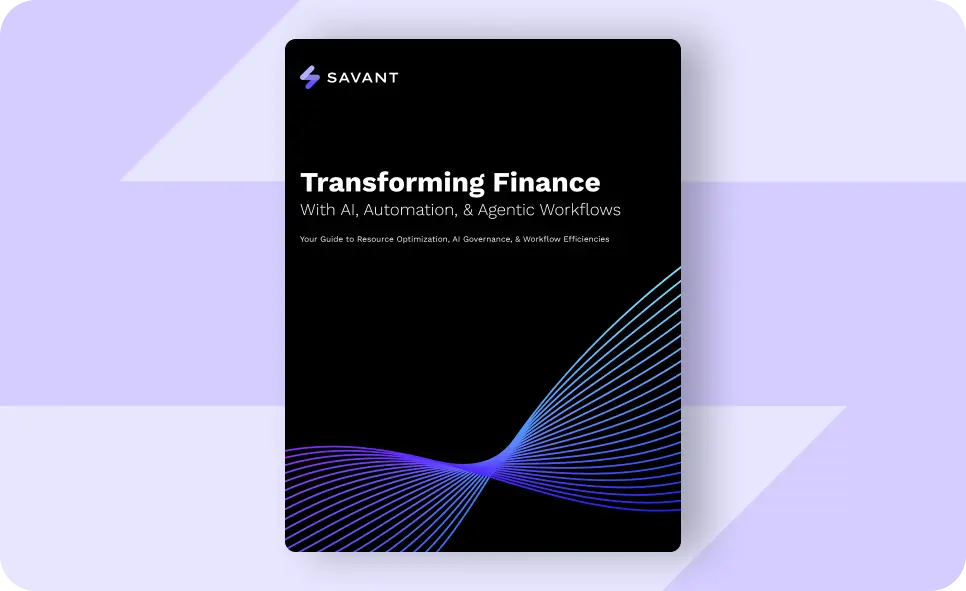Analytics and AI Glossary
Sorry, we couldn't find any glossary items matching your search. Please try a different keyword or browse by alphabet.
A
Advanced Analytics
Advanced analytics uses techniques like AI, machine learning, and predictive modeling to uncover insights, forecast trends, and improve decision-making.
Agentic AI
Agentic AI refers to autonomous systems that act, learn, and optimize workflows without human prompts—transforming finance, healthcare, and operations.
Agentic Analytics
Agentic analytics uses AI to enable autonomous, adaptive, and real-time decision-making for dynamic business insights and outcomes.
Analytics Automation
Analytics automation uses technology to streamline data collection, analysis, and reporting, enabling faster, accurate, and real-time insights.
Artificial Intelligence
Learn what Artificial Intelligence is, why it matters, and how it powers automation, insights, and self-directed decision-making in analytics.
Automated Reporting
Automated reporting uses software to generate reports, saving time, reducing errors, and delivering real-time, data-driven insights.
B
Big Data
Big Data refers to large, fast, and diverse datasets. It powers AI and analytics by uncovering patterns, trends, and insights for better decisions.
Business Intelligence
Business Intelligence turns raw data into insights using tools like dashboards, AI, and reports to support faster, smarter decision-making.
D
Data Analytics
Data analytics is the process of examining raw data to identify trends, patterns, and insights that drive better decisions and business outcomes.
Data Blending
Data blending merges datasets from multiple sources for unified analysis, enabling deeper insights and better data-driven decisions.
Data Cleaning
Data cleaning removes errors, duplicates, and inconsistencies to ensure datasets are accurate, complete, and reliable for analysis.
Data Completeness
Data completeness ensures all required information is present in a dataset, enabling accurate analysis, reliable insights, and better business decisions.
Data Conformity
Data conformity ensures datasets follow defined rules and formats, enabling consistency, accuracy, and seamless integration across systems.
Data Enrichment
Data enrichment adds external or internal context to existing datasets to improve accuracy, segmentation, and decision-making.
Data Governance
Data governance ensures data quality, security, and compliance. It defines roles, policies, and controls for trustworthy, consistent analytics.
Data Lake
A data lake stores raw structured and unstructured data at scale for advanced analytics, ML, and real-time insights.
Data Lineage
Data lineage maps the flow and transformation of data from source to destination, ensuring integrity, governance, and audit readiness.
Data Mapping
Data mapping is the process of matching fields between data sources to ensure consistency, accuracy, and seamless integration in ETL processes.
Data Modeling
Data modeling creates structured representations of data and relationships, ensuring consistency, integration, and efficient database design.
Data Onboarding
Data onboarding is the process of importing, validating, and integrating new data into a system, ensuring quality, consistency, and usability.
Data Profiling
Data profiling analyzes and summarizes datasets to assess structure, quality, and patterns, ensuring accuracy and readiness for analytics.
Data Quality
Data quality measures accuracy, completeness, consistency, and timeliness of data to ensure reliable insights and effective decision-making.
Data Quality Management
Data Quality Management ensures accurate, consistent, and reliable data through profiling, cleansing, monitoring, and governance practices.
Data Security
Data security protects sensitive digital information from breaches, corruption, and theft. Learn key strategies and tools.
Data Standardization
Data standardization converts data into consistent formats, ensuring accuracy, compatibility, and easier integration across systems.
Data Validation
Data validation ensures accuracy, consistency, and integrity by checking data against predefined rules before analysis or reporting.
Data Visualization
Data visualization uses charts, graphs, and visuals to present data clearly, helping identify patterns and support faster, informed decisions.
Data Warehouse
A data warehouse is a centralized repository for structured data, optimized for querying, reporting, and business intelligence insights.
Data Workflow
A data workflow is the sequence of steps to collect, clean, analyze, and automate data for accuracy, efficiency, and better decisions.
Data Wrangling
Data wrangling is the process of cleaning and transforming raw data into a structured format for reliable analysis and insights.
Deep Learning
Deep learning is a subset of machine learning that uses multi-layered neural networks to analyze data, recognize patterns, and power AI applications like vision and NLP.
Descriptive Analytics
Descriptive analytics reviews historical data to uncover trends, patterns, and insights, answering the question “What happened?”
Dimensional Modeling
Dimensional modeling structures data into fact and dimension tables for efficient querying, reporting, and business intelligence insights.
E
Embedded Analytics
Embedded analytics integrates dashboards, reports, and insights directly into software applications, enabling real-time, in-context decision-making.
ETL
ETL (Extract, Transform, Load) is a data process to prep and consolidate data for analysis. Learn how it compares to ELT and modern data workflows.
M
Machine Learning
What is Machine Learning, how it works, and how Deep Learning drives AI innovations like NLP, image recognition, and automation.
Modern Data Stack
A modern data stack is a set of cloud-based tools for data ingestion, storage, ETL, and BI, enabling scalable, flexible, and real-time analytics.
P
Predictive Analytics
Predictive analytics uses machine learning and historical data to forecast trends, improve decisions, and reduce risk.
Prescriptive Analytics
Prescriptive analytics recommends optimal actions using data, simulation, and AI to achieve desired outcomes and guide decision-making.
S
Semi-Structured Data
Semi-structured data has some organization using tags or labels but lacks rigid schema. Examples include JSON, XML, logs, and product reviews.
SOX Compliance
SOX compliance ensures financial transparency and internal controls to prevent fraud. Learn how it impacts governance and audits.
Structured Data
Structured data is organized in rows and columns, making it easily searchable and analyzable in databases, CRMs, and applications.
Supervised Learning
Supervised learning is a machine learning approach that trains models on labeled data to perform tasks like classification and regression.

